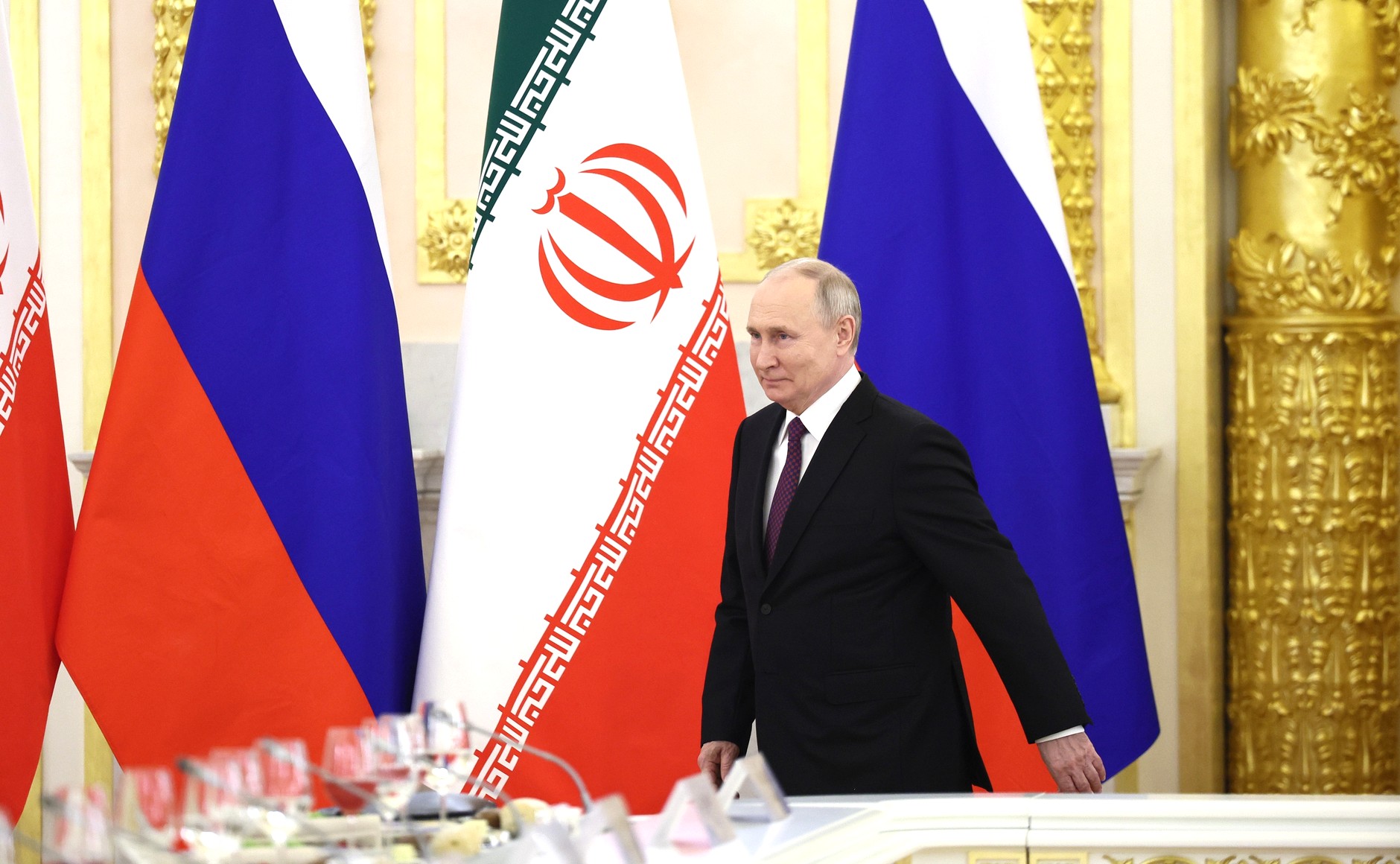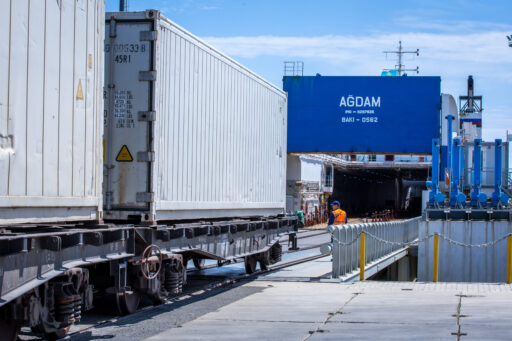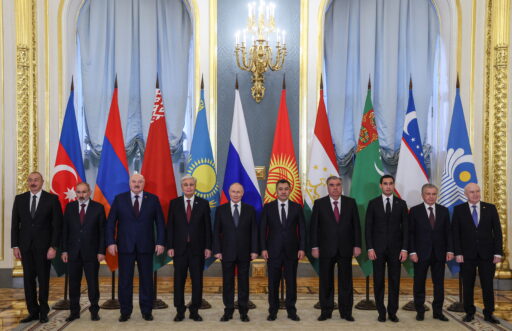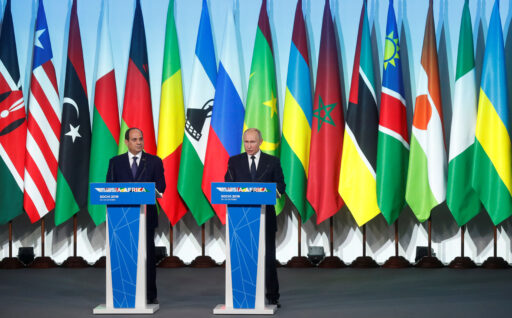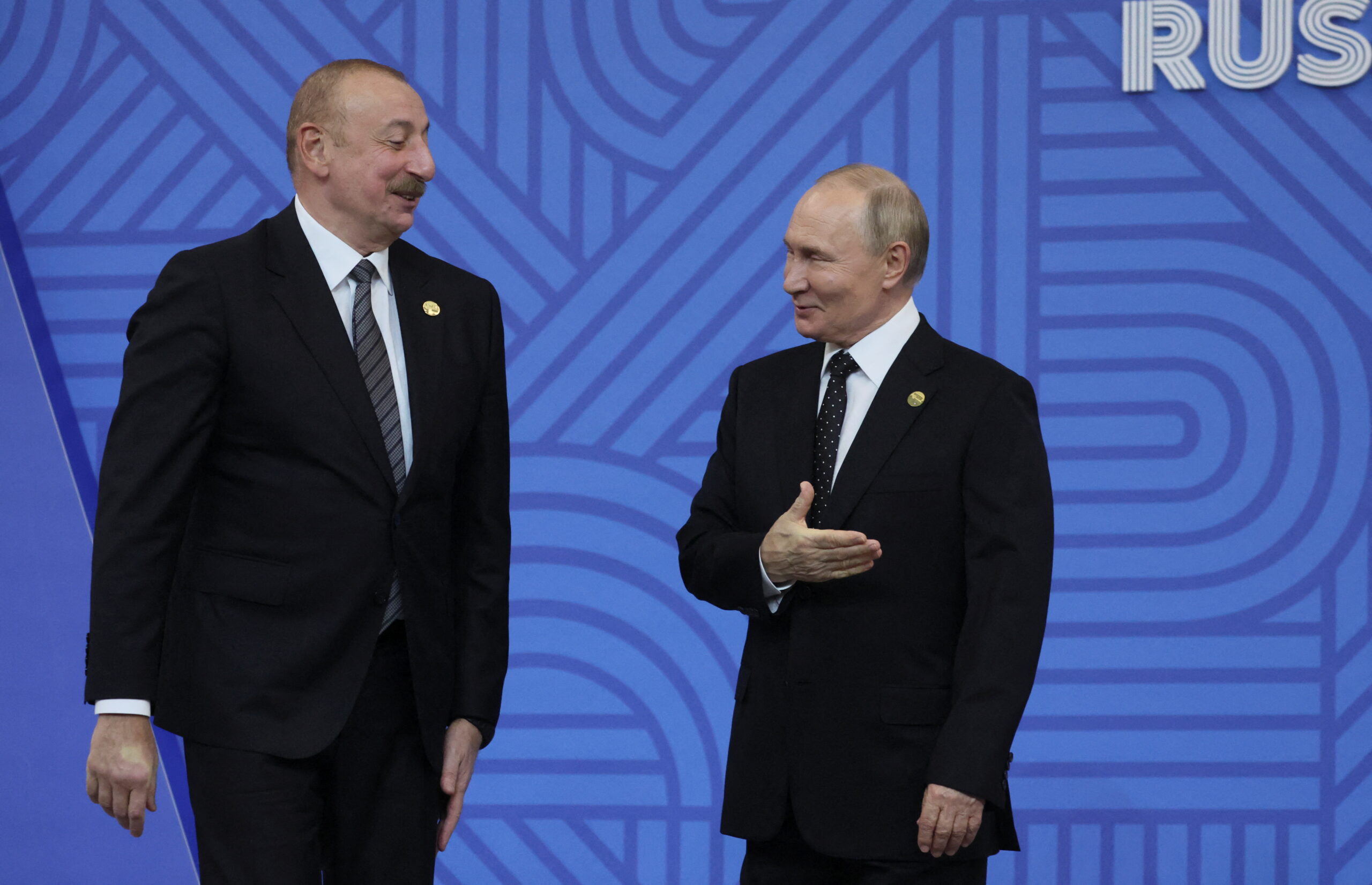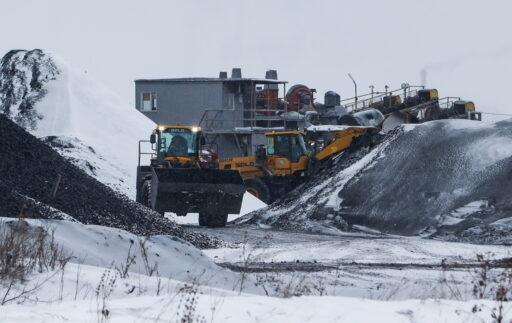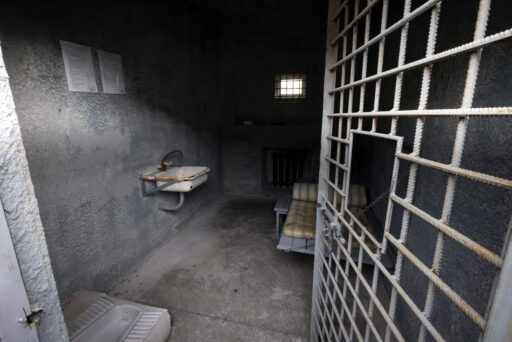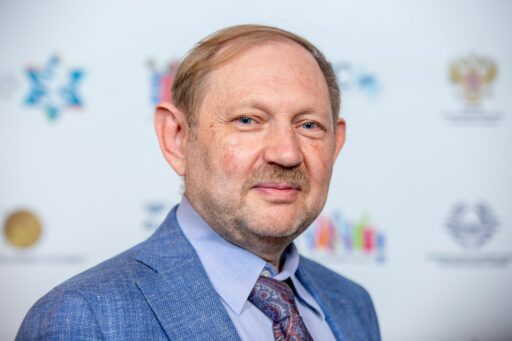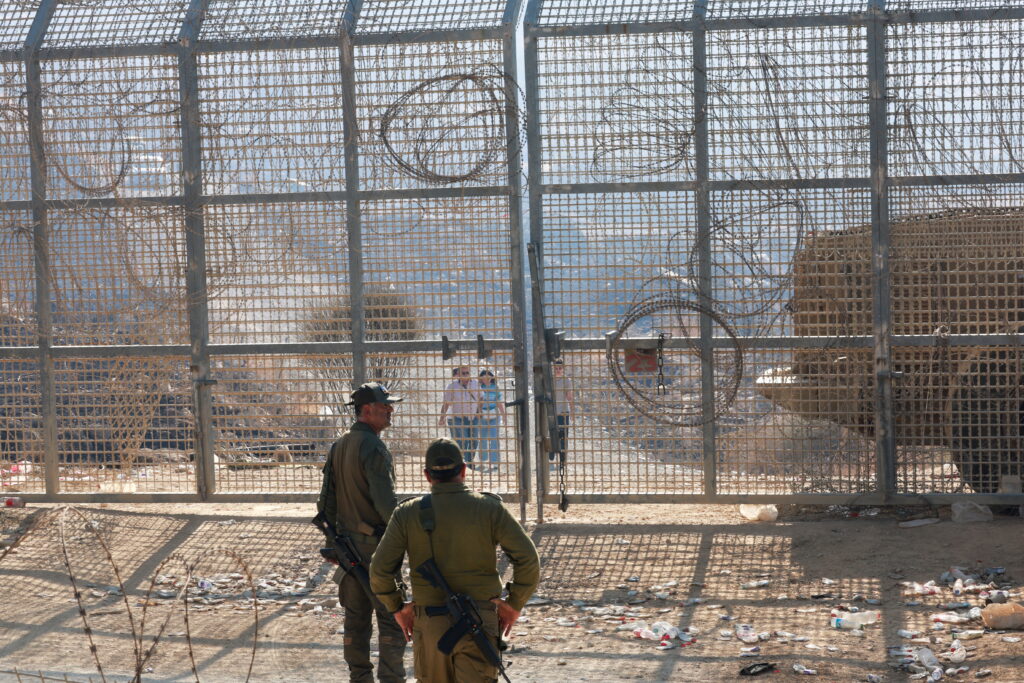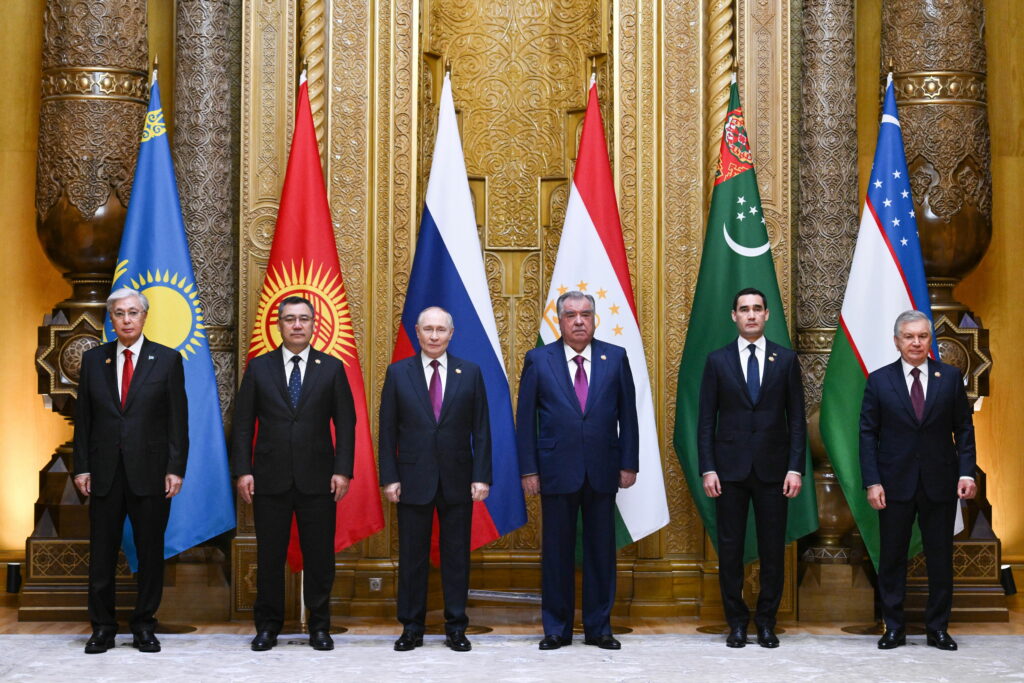Eight months into the current war in the Middle East, the international community, which has largely focused on Israel’s confrontation with the Hamas terrorist groups in Gaza and Lebanon’s Hezbollah, has finally become concerned about the role of Iran, the patron of these radical Islamist movements. On 5 June, the Board of Governors of the International Atomic Energy Agency (IAEA) adopted the first anti-Iran resolution after a long hiatus, condemning Tehran for avoiding cooperation, refusing to allow the organization’s inspectors into nuclear facilities and failing to explain traces of uranium at two undeclared sites.
The Shiite Islamists’ nuclear dossier
The ayatollahs’ regime’s desire to accelerate the movement towards Iran becoming a nuclear power — which would, of course, radically alter the geopolitical balance of power, provoke a nuclear arms race and become an existential threat to the countries of the Middle East and neighboring regions — is no secret. Work on enriching uranium to weapons grade and producing ballistic missiles capable of carrying nuclear warheads has not really stopped, despite the restrictions Tehran agreed to when it signed the Joint Comprehensive Plan of Action with the P5+1 group (five UN Security Council members plus Germany) in 2015. Following the withdrawal of the US from the agreement during the time of Donald Trump’s presidency, this work has continued more or less in the open. For example, the number of uranium enrichment centrifuges increased dramatically to 60% (the penultimate stage before weapons-grade enrichment at 90%), although Iran did not officially denounce the deal. The Iranians also regularly torpedoed Joe Biden’s attempts to negotiate a new deal that would include stronger assurances that the ayatollahs’ regime would not obtain nuclear weapons.
In the context of the current regional situation, Tehran’s actions take on special significance, especially after the 9 May statement by Kamal Kharazi, former Iranian foreign minister and current adviser to Iran’s Supreme Leader Ayatollah Ali Khamenei. Kharazi effectively disavowed the regime’s assurances over the past few years about the exclusively peaceful nature of Iran’s nuclear program, bluntly stating: «We have no decision to build a nuclear bomb, but should Iran’s existence be threatened, there will be no choice but to change our military doctrine. In the case of an attack on our nuclear facilities by the Zionist regime (Israel), our deterrence will change.»
The resolution condemning Iran, proposed by Britain, France and Germany, was supported by 20 of the IAEA’s 35 member states. Representatives of twelve other countries abstained, and two members of the IAEA board — Russia and China — voted against it, agreeing with Iran’s own view that the resolution was «hasty and unwise.»
The solidarity of Moscow and Beijing was not surprising: both countries see Iran as a key partner in their confrontation with the «global North» — the bloc of Western democracies and pro-American regimes led by the United States. Moscow, and perhaps Beijing, do not formally want Iran to develop a nuclear bomb, but they do not want Iran to be weakened by sanctions either, and therefore do not really want to hinder its nuclear program. Representatives of China, Iran’s main economic partner, however, limited themselves to general statements that «confrontation will not solve the Iranian nuclear issue» and standard calls for «the full revival of the P5+1 deal.» Moscow’s rhetoric was much tougher.
Vladimir Putin, for example, told a meeting with the heads of foreign news agencies in St Petersburg that any claims against Iran were inappropriate because «it was not Iran that withdrew from the deal» but «the United States that decided to withdraw [unilaterally].» In other words, the Kremlin actually recognizes Iran’s right in this matter and puts all the blame for the crisis on the United States and its allies.
This uncompromising decision has its own motives and an explanation. After Russia’s full-scale invasion of Ukraine, the level of partnership between Moscow and Tehran rose sharply and gradually took on the characteristics of a close military-strategic partnership. The two regimes that have been facing numerous sanctions found common ground rather quickly, despite the previous rough edges in their relations. «Iran and Russia are growing closer the more isolated they become,» noted US presidential spokeswoman Karine Jean-Pierre on 26 October 2022.
Indeed, the interaction between Tehran and Moscow ran through many channels at once: military, economic and geopolitical. In July 2022, the two countries signed a strategic partnership agreement, and in August the delivery of Iranian Shahed-31 and Shahed-36 drones to the Russian army began. In early November 2022, The New Yorker, citing sources in the US administration, reported Iran’s full involvement in the war in Ukraine.
The main facet of the partnership has been the mutual supply of critical weapons. Russia has supplied or promised to supply Iran with anti-aircraft systems, attack helicopters, fighter jets, combat training aircraft and, according to some reports, selected nuclear technology as well. In return, Iran has supplied its ally with various types of drones (as well as technology and equipment for their production at a facility in Tatarstan), hundreds of missiles and other munitions, as well as parts and equipment for aircraft manufactured in Iran.
According to The New Yorker, the deal was Tehran’s strategic choice, based not so much on financial or economic dividends as on geopolitical benefits. For Russia, the cost of the deal was, among other things, a willingness to accept the ayatollahs’ regime’s declared geopolitical interests, even when they contradicted Moscow’s own long-term line. Russia, whose military and diplomatic resources are largely tied up in the war in Ukraine, is willing to accept Iran’s growing weight in areas of former «competitive cooperation» between the two states — in Syria, Central Asia and the South Caucasus.
Iran, Russia and the New War in the Middle East
One consequence of this strategy has been a change in Russia’s Middle East agenda. Since the 1990s, Russia’s Middle East policy has been guided by the doctrine of balancing between the various centers of power in the region. Moscow demonstrated its willingness to cooperate with all regional actors, offering itself as an «honest broker» between conflicting parties. Perhaps the most striking example of this declared idea has been Moscow’s efforts to simultaneously maintain a close partnership with Iran and establish «special relations» with the US’s strategic ally Israel, i.e. countries that see each other as a source of existential threat.
In view of the strategic rapprochement between Moscow and Tehran after February 24, 2022, the previous scheme of Russia’s relations with Israel, the key link in the emerging anti-Iranian bloc, is no longer relevant. In the new version of the Middle East conflict — as a local version of the «neo-anti-colonial» confrontation between the global South and the global North — Russia is actually on the side of Iran, with some minor reservations. For about a year and a half, however, Israel and Russia tried to maintain a «business as usual» image in their relations. Against a backdrop of growing mutual irritation, however, this has become increasingly difficult.
The IDF operation in the Gaza Strip, which was a response to the Hamas-perpetuated massacre in southern Israel, and the (so far) positional conflict with militants of the Lebanese terrorist group Hezbollah in the north of the country have created an altogether new reality. Both radical Islamist terrorist groups — Sunni Hamas and Shia Hezbollah (like the Yemeni Houthis and pro-Iranian Shia militias in Syria and Iraq) — are Iranian proxies.
It is with their help that Iran, which has invested gigantic military, material, financial and political resources in them, has long been waging war with its regional adversaries, while remaining formally on the sidelines. The norms guiding Tehran’s relations with its terrorist «affiliates» do not, as a rule, presuppose the latter’s independence. For example, when in November 2023, head of the Hamas politburo Ismail Haniyeh met with Iran’s supreme leader Ali Khamenei, he heard from him words of complete and full support. Yet, Khamenei also said that Tehran would not fight for Hamas, since the October 7, 2023 attack had been coordinated neither with Iran, nor with Hezbollah.
But because Tehran still has a vested interest in the survival of its proxies in this new Middle East war, Russia has de facto sided with them, albeit more in rhetoric than in practice. For example, reports that Russia is supplying arms to Hamas have not been clearly confirmed, but the group has received millions of dollars through a Moscow-based crypto-currency exchange. Despite the bloodbath unleashed by Hamas on Israeli kibbutzim and other localities, Moscow continued to favor Hamas. Shortly after October 7, 2023, a Hamas delegation led by politburo member Abu Marzouk was officially welcomed by Russia’s Ministry of Foreign Affairs, and in the months that followed, Russia provided the Palestinian Islamists with strong diplomatic cover at the UN. Russia supported South Africa’s complaint to the International Court of Justice against Israel for its alleged «genocide» of Gaza’s Arab population. Russian officials have also hinted, or even openly declared, their willingness to support Lebanon’s Hezbollah in the event of a full-scale war with Israel. And the press has reported on the possibility of supplying Hezbollah with Russian-made air defense systems through the «Wagner» group.
One indicator of the gradual shift in Moscow’s Middle East priorities has been the evolution of its assessment of Israel’s response to Hamas aggression. Russian leaders went from relatively neutral and even somewhat sympathetic statements at the beginning of the IDF’s «Iron Swords» operation to openly hostile rhetoric in the following months, rhetoric that in many ways was close to the propaganda produced and disseminated by the Iranian ayatollahs and the Arab Islamists themselves. For example, at the above-mentioned meeting with the heads of foreign news agencies that took place on 5 June on the sidelines of the St Petersburg International Economic Forum, Vladimir Putin defined what was happening in Gaza as «the total destruction of the civilian population.» He added, however, that Russia was «against terrorism in all its manifestations (…) against the civilian population in any place and in any country.» Putin did not specify which terrorists and which civilians he was referring to.
As for Iran’s main satellite in the eastern Mediterranean, Hezbollah, contrary to the hopes of Hamas leaders, this group has long been reluctant, without direct orders from Tehran, to launch a full-scale attack on Israel from the north, although tensions there and the number of rocket attacks on Israel have increased significantly in recent weeks. In addition to fears that Israel might move towards proactive actions that could turn Beirut and Shi’ite areas of Lebanon into another Gaza Strip, a key reason was Tehran’s desire to keep Hezbollah at bay should Israel, alone or with its allies, decide to attack Iran’s nuclear facilities.
In previous years, when the IDF struck those military installations of the Iranian Revolutionary Guard Corps (IRGC)’s foreign operations units and pro-Iranian militias that posed a tangible threat to Israel, Iran avoided retaliation that could lead to an open, full-scale Iran-Israel war. Official Tehran merely issued threats to «take revenge on the Zionists at a time convenient to Iran» and instructed its satellites where and when to demonstrate «the effect of presence.» The situation was changed by the war in Gaza, which is in fact one of the fronts of the current great regional war of a new type, going beyond the already largely exhausted Arab-Israeli conflict. It was clear that the Iranians could no longer hide behind their proxies.
«The one-day war» and its aftermath
That moment came on 1 April, when it was reported that seven senior IRGC officers, including Brigadier General Mohammad Reza Zahedi, considered a key figure in Iran-Hezbollah relations, had been killed in an Israeli air strike in Syria. These individuals were in a building adjacent to the Iranian embassy in Damascus at the time of the attack. This was soon followed by accusations leveled against Israel of violating articles of the Vienna Convention of 1961 on the inviolability of diplomatic missions. Russia, which submitted a draft resolution to the UN Security Council condemning the Israeli attack, was among the most vocal parties. However, these demarches were rendered meaningless when it became clear that the Damascus strike had been carried out against an IRGC unit that used one of the buildings adjacent to the diplomatic complex for military purposes.
Of course, the Iranians could not accept this version of what happened without damaging their own standing in the region. The result was a «one-day» open Iranian-Israeli war. On the night of 14 April, the Iranians and their proxies fired some 500 munitions at Israel: attack drones, ballistic and cruise missiles, 99% of which were intercepted by the IDF’s air force and air defenses, as well as those of Israel’s allies and partners: the US, Britain, Jordan and Saudi Arabia.
Despite calls from Washington and the EU to refrain from retaliation, Israel could not pretend that the incident had been resolved. A lack of Israeli response, especially after the 7 October attacks, would have given the impression that the Jewish state’s deterrent was weakening. Public demand was also evident: according to a poll conducted the day after the Iranian attack, 29% of Israelis called for an immediate retaliatory strike against Iran, 37% felt it was necessary to strike its facilities «at an appropriate time», and only 25% suggested «no response for now».
As a result, on April 18, Israeli Ambassador to the United States Michael Herzog said that «Israel will respond to Iran, and it will not have to wait for many years, because Iran’s missiles will receive nuclear warheads soon.» And on the night of April 19, the Israeli Air Force launched an effective strike against a Russian-made air defense system covering a nuclear fuel enrichment facility near the city of Natanz in Isfahan province, where numerous facilities engaged in the development and production of the latest types of weapons are concentrated. By doing so, Tehran was shown that Israel has little difficulty in reaching virtually any of its critical military infrastructure.
The death of Iranian President Ibrahim Raisi and a group of his entourage on May 19, 2024, in a presidential helicopter crash in Iran’s East Azerbaijan Province is unlikely to significantly change this context. Whoever the ayatollahs nominate as an acceptable candidate for the next president, their hostility toward Israel will remain unchanged, as will their trajectory toward further strategic rapprochement with Russia.
